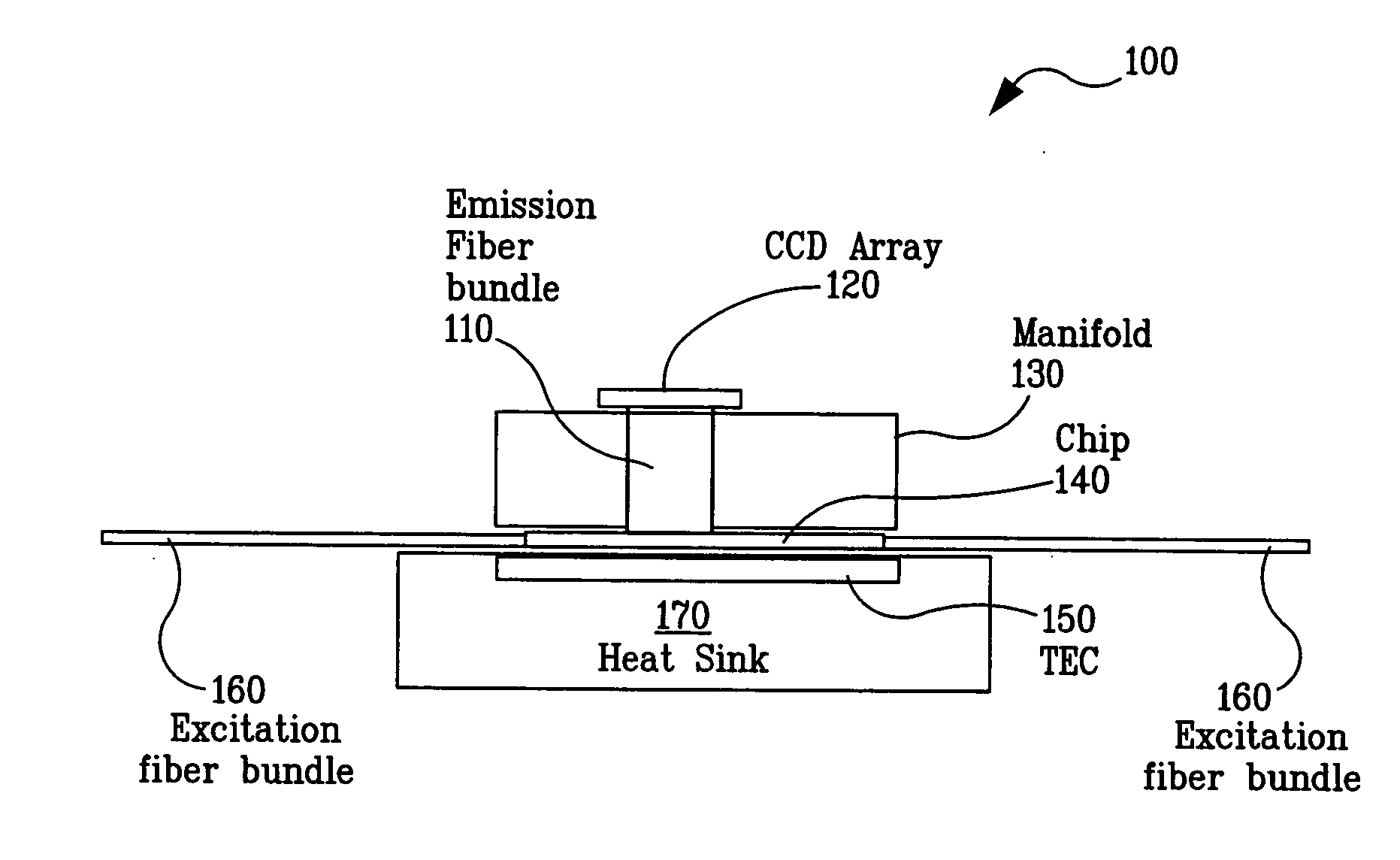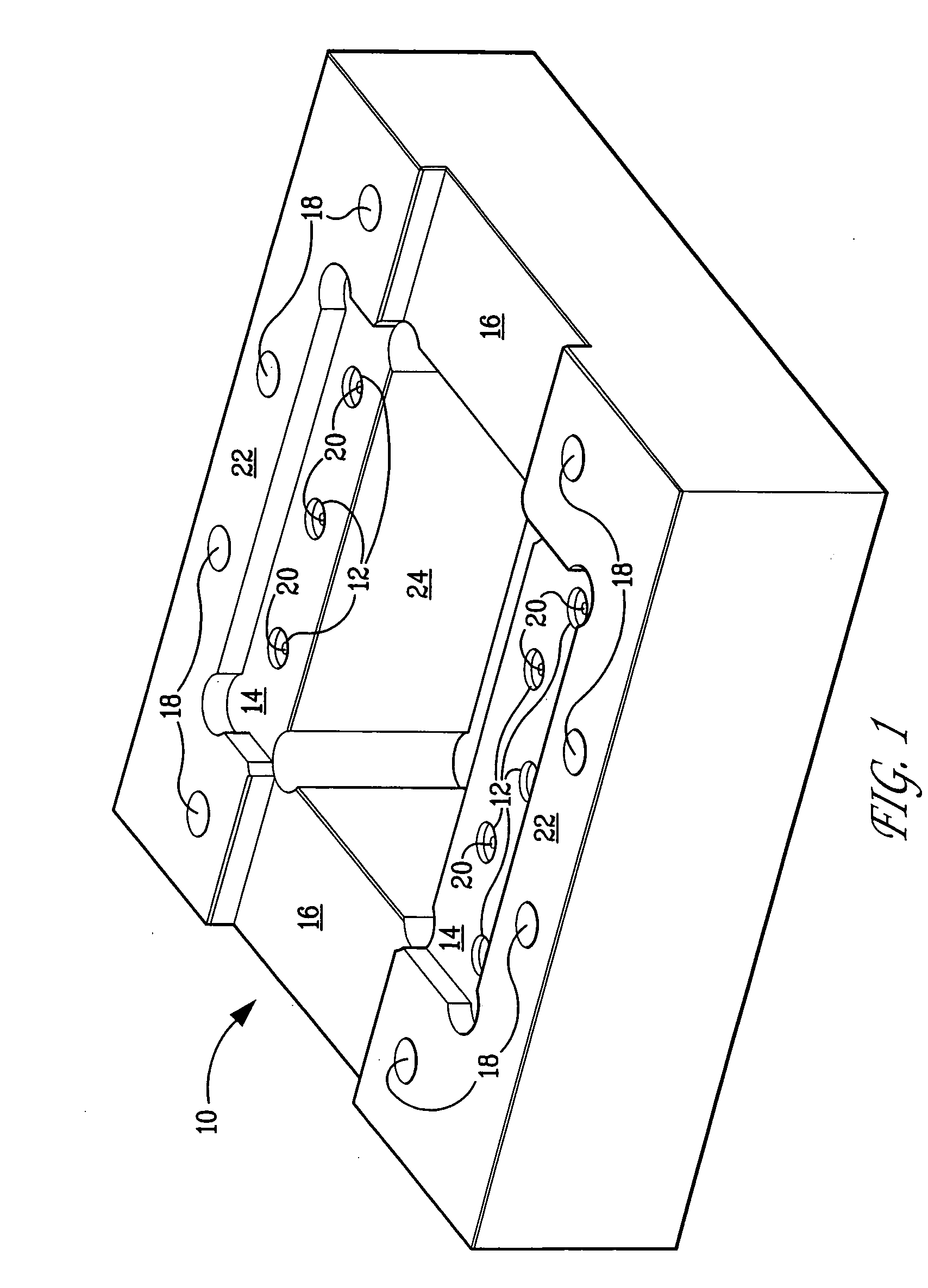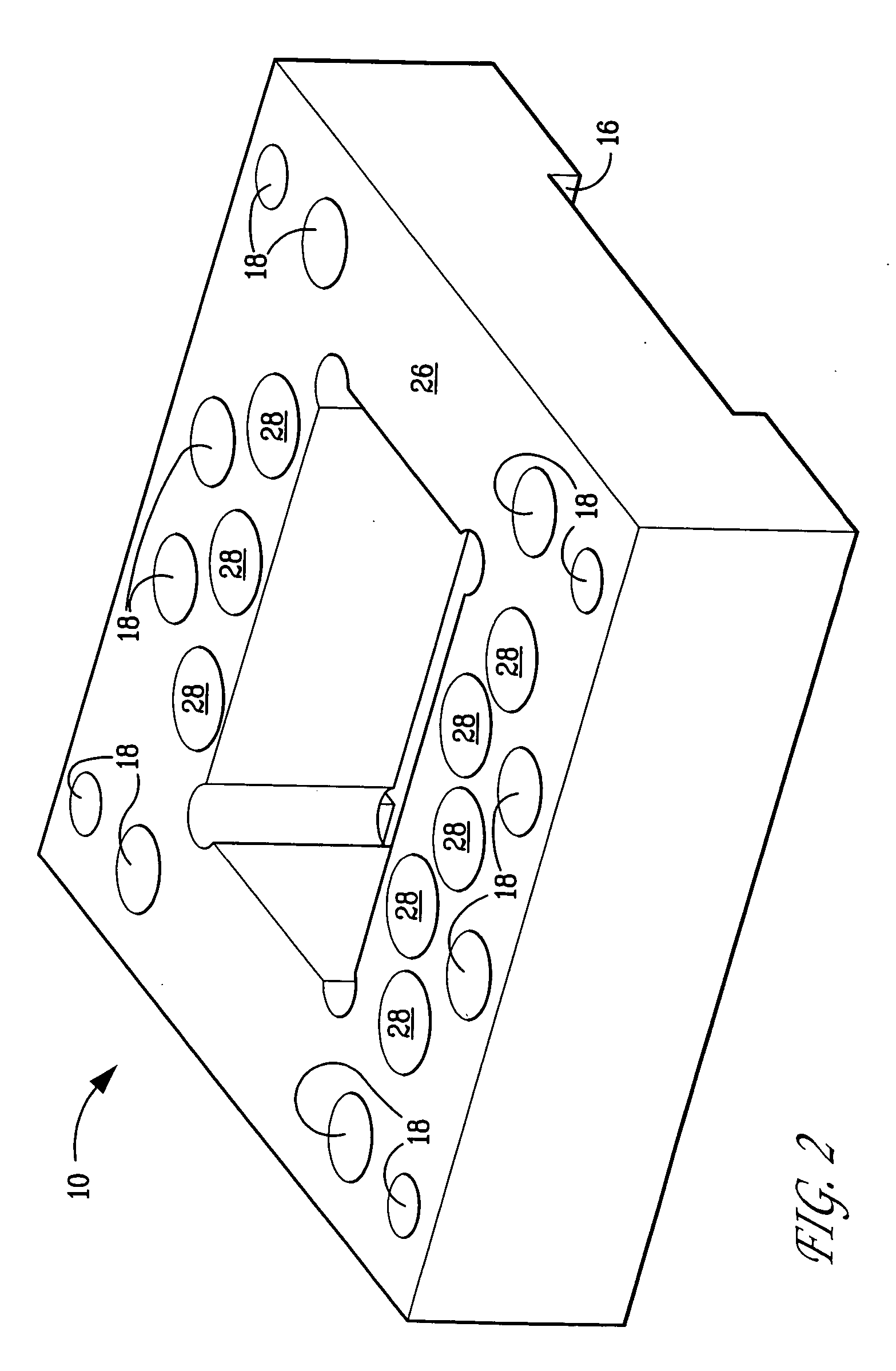Microfluidic microarray systems and methods thereof
- Summary
- Abstract
- Description
- Claims
- Application Information
AI Technical Summary
Benefits of technology
Problems solved by technology
Method used
Image
Examples
examples
[0049] A system as described herein and illustrated in FIGS. 1-10 was fabricated to establish fluidic connection between microfluidic microarray chips and fluidic reservoirs that contain solutions used for microarray experiments. The system enables detection of microarray probes deposited on the microarray surface in parallel and in real-time. Sample preparation, microarray hybridization and probe / target detection are integrated with illumination of the microarray. The system provides a compact platform for detection applications, including portable sensing of bio-molecules (gene sequences, and proteins) from viruses, bacteria, plants, algae as well as eukaryotes (mammalian cells) or any experiment that could be accomplished on a microarray platform.
[0050] Microarray Preparation and Detection. Detection of a typical microarray is performed after the microarray is spotted and has been hybridized for approximately 12 hours. After this incubation period, the microarray is washed using...
PUM
| Property | Measurement | Unit |
|---|---|---|
| Temperature | aaaaa | aaaaa |
| Temperature | aaaaa | aaaaa |
| Length | aaaaa | aaaaa |
Abstract
Description
Claims
Application Information
 Login to View More
Login to View More - R&D
- Intellectual Property
- Life Sciences
- Materials
- Tech Scout
- Unparalleled Data Quality
- Higher Quality Content
- 60% Fewer Hallucinations
Browse by: Latest US Patents, China's latest patents, Technical Efficacy Thesaurus, Application Domain, Technology Topic, Popular Technical Reports.
© 2025 PatSnap. All rights reserved.Legal|Privacy policy|Modern Slavery Act Transparency Statement|Sitemap|About US| Contact US: help@patsnap.com



